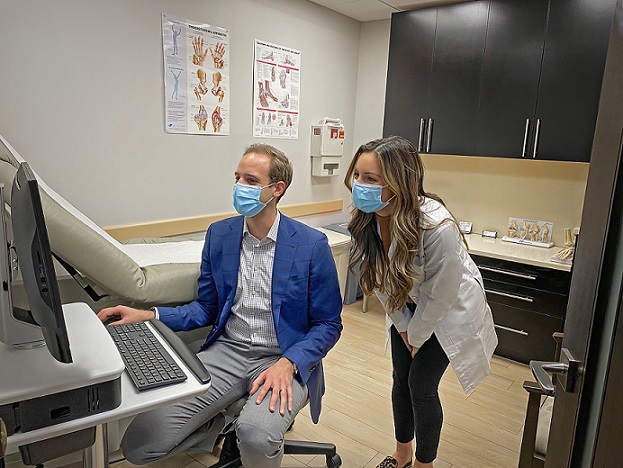Elizabeth Hofheinz, M.P.H., M.Ed.
In order to clear up inconsistences in methods describing acetabular cup orientation, a team of researchers from the Netherlands developed and tested a novel algorithm to determine the changes in 3-D acetabular cup orientation by functional pelvic tilt.
Their work, “The Effect of Postural Pelvic Dynamics on the Three-dimensional Orientation of the Acetabular Cup in THA Is Patient Specific,” was published in the September 29, 2020 edition of Clinical Orthopaedics and Related Research.
Confusion regarding cup orientation
Co-author Thom Snijders, M.D. is an orthopedic resident and researcher at UMC Utrecht in the Netherlands. Dr. Snijders told OSN: “In 2018 we published a systematic review, ‘Lack of consensus on optimal acetabular cup orientation because of variation in assessment methods in total hip arthroplasty: a systematic review,’ establishing a wide variety of methods to describe the acetabular cup orientation. Orthopedic surgeons thought they were discussing preferred cup orientation angles using identical terms, not knowing they were using physically different angles. Despite that Prof. dr. Murray already denoted this problem in 1992.”
“Therefore,” said Dr. Snijders to OSN, “comparing the results of these variable methods was strictly seen as impossible. To solve this problem, we suggested a basic customary method: to determine the cup orientation on the three anatomical planes. These three angles have a fixed mathematical relationship and this relationship turned out very useful when the pelvis tilts anteriorly or posteriorly.”
The authors wrote, “The model connected sagittal tilt, transverse version, and coronal inclination of the acetabular cup during sagittal pelvic tilt. Furthermore, the effect of sagittal pelvic tilt on the 3-D reorientation of acetabular cups was simulated for cups with different initial positions. Twelve pelvic CT images of patients who underwent THA were taken and rotated around the hip axis to different degrees of anterior and posterior sagittal pelvic tilt (6 30°) to simulate functional pelvic tilt in various body positions. For each simulated pelvic tilt, the transverse version and coronal inclination of the cup were manually measured and compared with those measured in a mathematical model in which the 3-D cup positions were calculated.”
“Next, this model was applied to different acetabular cup positions to simulate the effect of sagittal pelvic dynamics on the 3-D orientation of the acetabular cup in the coronal and transverse plane. After pelvic tilt was applied, the intraclass correlation coefficients of 108 measured and calculated coronal and transverse cup orientation angles were 0.963 and 0.990, respectively, validating the clinical use of the mathematical model.”
Dr. Snijders: “Surprisingly, the transverse version (anteversion) changes significantly with pelvic tilt when the coronal inclination is low. (~40) This might imply that the transverse version is not the most important orientation angle for studying dislocation in THA. With limited pelvic tilt, anteversion could still change considerably, mimicking normal orientation.”
Details on dynamic situations
“The most important result was the development of the tool itself. It is an easy to use, freely available tool to study cup orientation in combination with pelvic dynamics in different THA patients.”
“Most importantly, this enables easy-accessible dynamic research in the field of THA stability. Beforehand, almost all research was done in the static supine or standing position. However, dislocations occur in dynamic situations. This tool enables the calculation of the 3-D cup orientation in these high-risk positions.”





